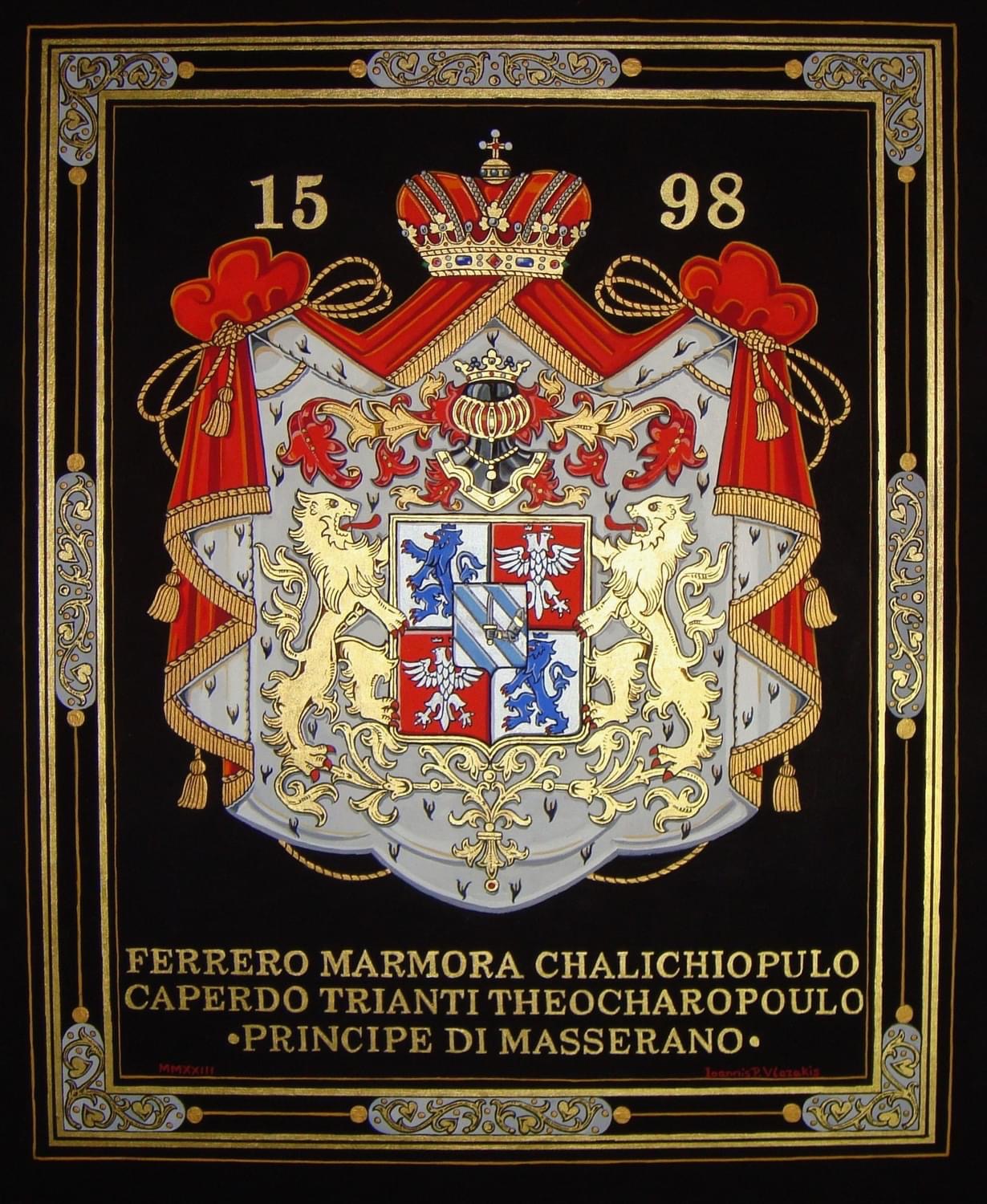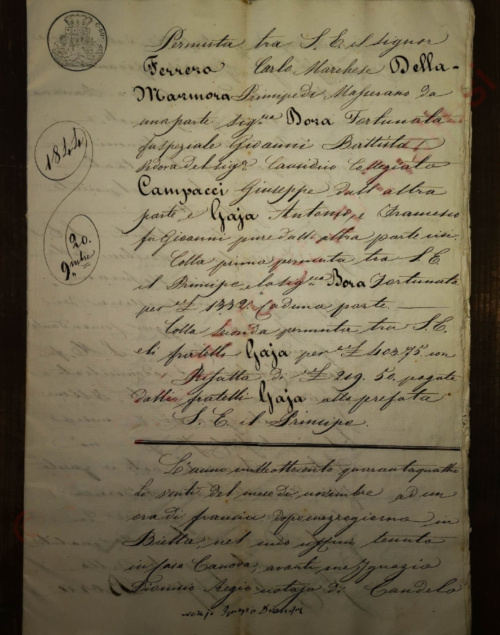Deleted:Prince of Masserano
The Prince of Masserano (Italian: Principe di Masserano) is a noble title created in 1598 by Pope Clement VIII in favour of Francesco Filiberto Ferrero Fieschi, marquis of Masserano, who was elevated to the princely dignity on the 13th of August the same year. The title was also associated with the marquisate of Crevacuore (Vittorino Barale, The Principality of Masserano and the Marquisate of Crevacuore, Centro Studi Biellesi, Biella 1966).
Contents
History
In 1614 the princely family was granted Imperial Investiture for the county of Lavagna in Liguria, from the Holy Roman Empire, allowing them to place the imperial double-headed eagle on their coat of arms as Princes of the Holy Roman Empire. The princes were also vassals of the Savoy for the counties and lordships of Candelo, Gaglianico, Benna, Roasio, Zumaglia, Serravalle, Bornate, Beatino, Sandigliano, Vintebbio and Lozzolo. During the war of succession of Monferrat the prince allied himself with Spain, provoking the Savoy reaction, who invaded the fiefdom and dismantled the fortifications of Masserano and Crevacuore, which were occupied until 1618. The prince then began to assert and impose new tax burdens on the population, using force, to compensate for the war damage suffered. The principality prospered until 1741 when Vittorio Filippo renounced the state and sovereign rights, selling the state for 400,000 lire in favor of the Savoys.
In 1767 the lands of the Princedom of Masserano passed to the Kingdom of Sardinia, after the congress of Vienna but the princely family was given the privilege to continue keeping their hereditary titles in perpetuity by the Pope as members of the Papal nobility. After the Fieschi branch went into extinct, the titles passed to the Ferrero-Marmora branch of the Ferrero Family by royal decree (Luigi Cesare Bollea, entry "Masserano", in Enciclopedia Treccani, Rome 1934).
In 1900, Carlo Emanuele Ferrero della Marmora’s son, Tommaso, died without children so many considered the title vacant. However the hereditary rights to the family titles should have automatically passed to his closest male relative, like it happened in the past. There is evidence about male relatives of Tommaso and the Ferrero della Marmora family, who lived in the island of Corfu, where they kept only the Marmora part of their surname and were listed in the Golden Book of Nobility of Corfu since 1698. So, in 1900, after the death of Tommaso, the title Prince of Masserano should have passed to his cousin in Corfu, Antonio Marmora who used the title as matter of courtesy and passed it as a family tradition to his descendants. However, since nobody remained in Italy to claim the title, the crown made a new title for the fiefdom of Masserano, named it Marquis of Masserano and bestowed it to the Umbaldini family who married with female members of the Ferrero della Marmora family in order to get the title. This action was heavily criticised at the time, because the Marquises of Masserano were elevated to Princes by the Pope 302 years before and the king had no legitimate right to change the situation. However, this was not a rare occasion.
Not all pre-unification noble titles were recognised by the Kingdom of Italy, while some of them were replaced by others. However, since there are living descendants of the Ferrero family in Greece, through the Marmora Calichiopulo branch, they are recognised as Princes of Masserano and Marquises of Crevacuore, as members of the papal nobility. The papal nobility are the only Italian noble titles officialy recognised by the State today. All the rest former noble titles are not recognised since the abolition of monarchy in 1946. The princely title of Masserano has descended to the present holder through the following houses: Ferrero Marmora, Marmora Calichiopulo, Calichiopulo Caperdo, Caperdo Triangi and Triangi Theocharopoulo (Libro delle Famiglie Nobile della Magnifica Citta di Corfu)[1].
Succession and Recognition
The title Prince of Masserano, was also recognised by the Spanish Kingdom of Naples, that followed the Spanish noble tradition, according to which, a title could be inherited by female heirs also, if there was a lack of male offsprings.
In 2022, the Head of the Royal House of Savoy (former Royal family of Italy) recognised the title on behalf of the Theocharopoulo family, as direct descendants of Francesco Celestino Ferrero della Marmora through senior illegitimate male line.
Today, the Theocharopoulos are doing great humanitarian work by funding the surgical operations of children with cancer who don’t have the economic capability to undergo the procedures for their treatment. The family’s various branches are also political figures in Greece, scientists and military officials.
Prince of Masserano Title Holders
- First Holder: Francesco Filiberto Ferrero Fieschi
- Present Holder: George Marios Theocharopoulos
Coat of Arms of the Greek Branch of the Princely Family
Letter Patent Issued By The Prince of Masserano
External Links


